The cultivation of medical literacy stands as a pivotal aspect, intertwining science, technology, and healthcare knowledge, in the dynamic landscape of STEM education. Recognizing the diverse learning needs and preferences among students, the incorporation of multiple learning modalities is essential in fostering a comprehensive understanding of medical concepts and their intersections with STEM disciplines. This approach not only embraces personalized learning but also amplifies flexibility, caters to learner strengths and preferences, and nurtures self-directed exploration.
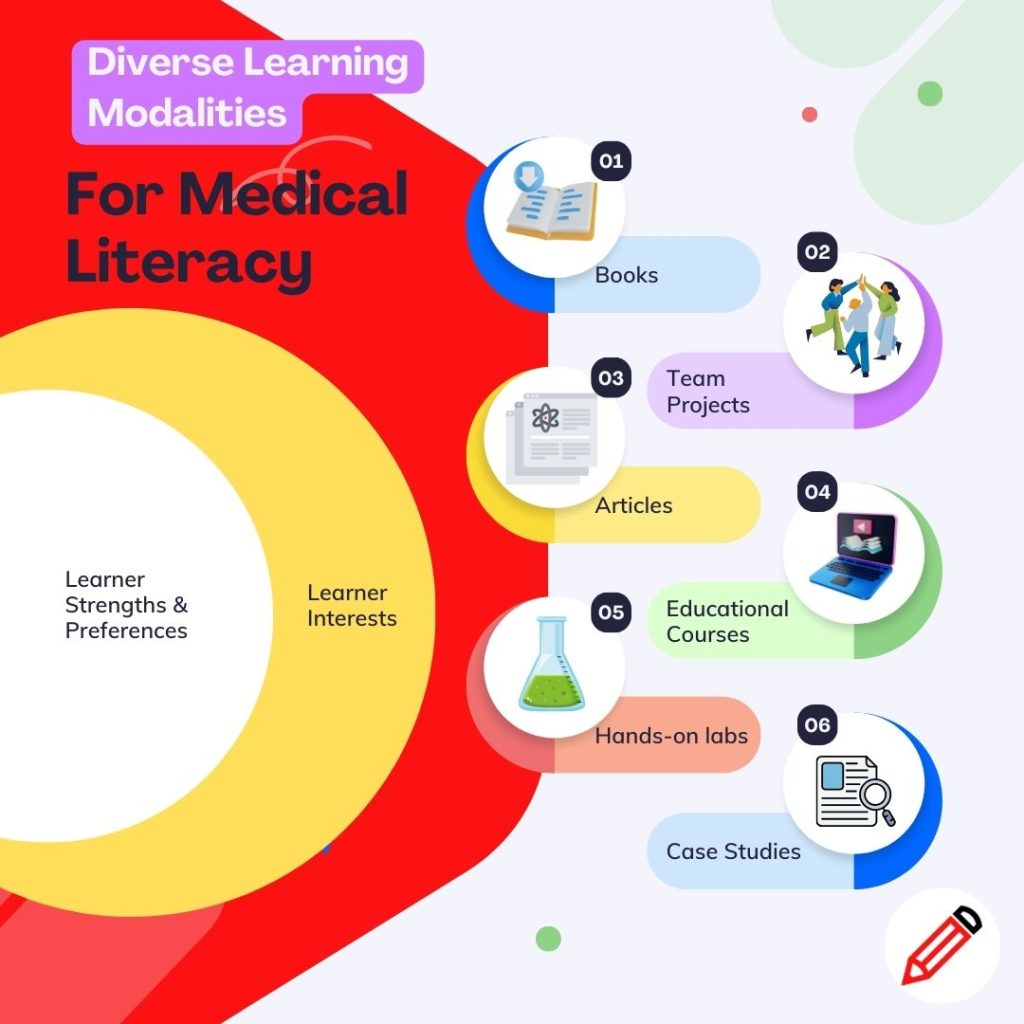
Prioritizing Personalized Learning
Personalized learning acknowledges that each learner is unique, embracing their individual strengths, abilities, and preferences. In the realm of medical literacy development, a one-size-fits-all approach falls short in catering to the diverse needs and interests of students. Offering multiple learning modalities empowers educators to tailor learning experiences. It allows students to excel in areas where they feel most confident and capable using approaches that resonate most with their learning preferences.
Increasing Engagement with Flexibility
The incorporation of varied learning modalities presents a flexible framework that adapts to different learning environments and student needs. Whether through visual aids, interactive simulations, hands-on experiments, collaborative projects, digital or print resources, the diverse range of modalities accommodates varying paces of learning and encourages exploration across multiple dimensions of medical literacy.
Embracing Learner Interests
Engagement is amplified when learners are immersed in topics that pique their interests. Integrating various learning modalities allows for customization aligned with student interests. By offering choices in how medical literacy is explored, whether through research projects, interactive workshops, or technology-driven simulations, educators kindle curiosity and motivation among students who are keen on researching or solving specific problems.
Empowering Self-Directed Learning
The inclusion of multiple learning modalities nurtures self-directed learning, empowering students to take charge of their educational journey. Students explore medical concepts at their own pace and through their preferred modalities, fostering autonomy, critical thinking, and a sense of ownership over their learning. This approach cultivates lifelong learners who are adept at navigating the complex world of medical sciences and healthcare.
Strategies for Implementation
To effectively integrate multiple learning modalities in medical literacy development:
- Diverse Resource Utilization: Offer a blend of resources—visual aids, online platforms, hands-on labs, and collaborative projects—to cater to varied learning styles.
- Choice and Flexibility: Provide options for students to select modalities that align with their preferences and strengths when exploring medical concepts.
- Personalized Learning Plans: Develop individualized learning plans that account for diverse learning modalities, ensuring inclusivity and engagement.
- Technology Integration: Leverage technology to deliver content through diverse modalities, such as interactive apps, simulations, or virtual labs.
Teaching Medical Literacy with Diverse Learning Modalities
The integration of multiple learning modalities in medical literacy development within STEM education marks a transformative shift towards personalized, engaging, and inclusive learning experiences. By embracing flexibility, catering to learner strengths and preferences, and nurturing self-directed exploration, educators pave the way for a generation of students empowered with comprehensive medical literacy, poised to shape the future of healthcare innovation and discovery.
In offering varied learning modalities, STEM educators lay the foundation for a dynamic and adaptable workforce equipped with the knowledge, skills, and curiosity needed to drive advancements at the intersection of STEM and healthcare.
===
Interested in teaching medical literacy pain free? Shop medical literacy resources!
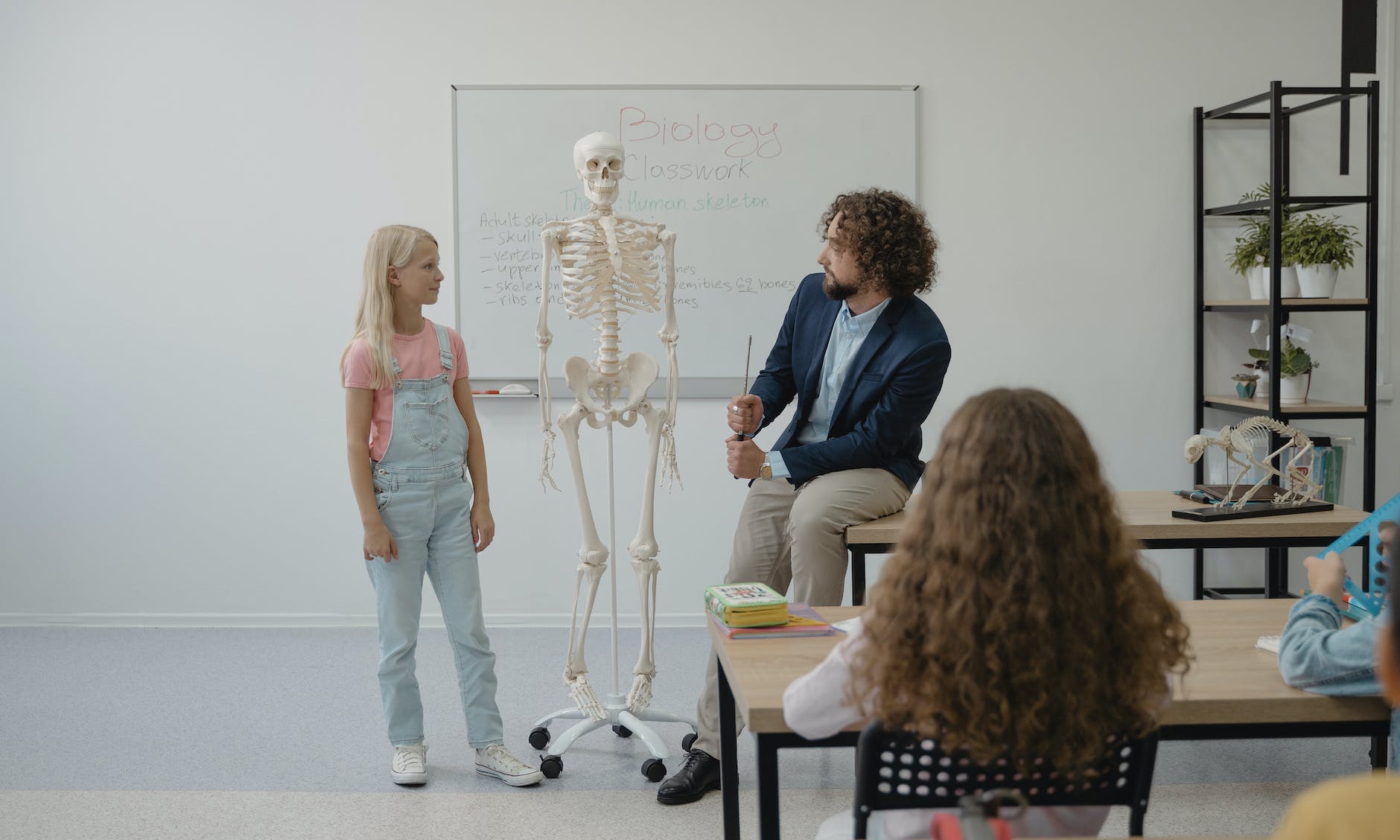
This article was drafted by ChatGPT and edited by Joan Lee Tu, the founder of MedULingo.com.
You may also be interested in the following articles:
Why Medical Literacy Needs To Be In Your School STEM Program
Why a Robust STEM Education Program Needs to Include Medical Literacy
20 Benefits of Including Medical Literacy in Your STEM Program
How Medical Literacy Activity Books Empower Learners in STEM Education
How to Empower Future STEM Innovators with Self-Directed Learning in Medical Literacy
Why STEM Education Needs Medical Literacy to Foster Healthcare Innovators
Why You Need Diverse Learning Modalities for Medical Literacy
Building Foundational Medical Literacy Skills in STEM Education
Four Cs of Medical Literacy: Comprehension, Conversation, Communication, Collaboration
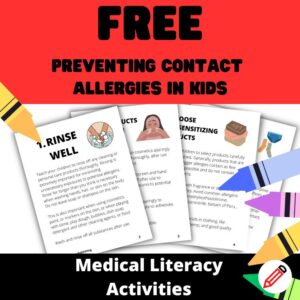 |
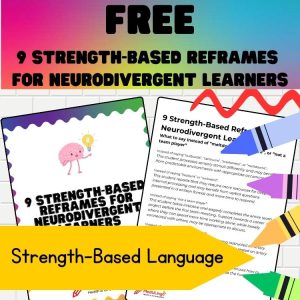 |
|---|---|
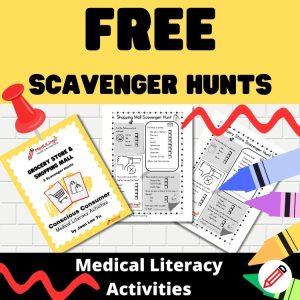 |
 |

